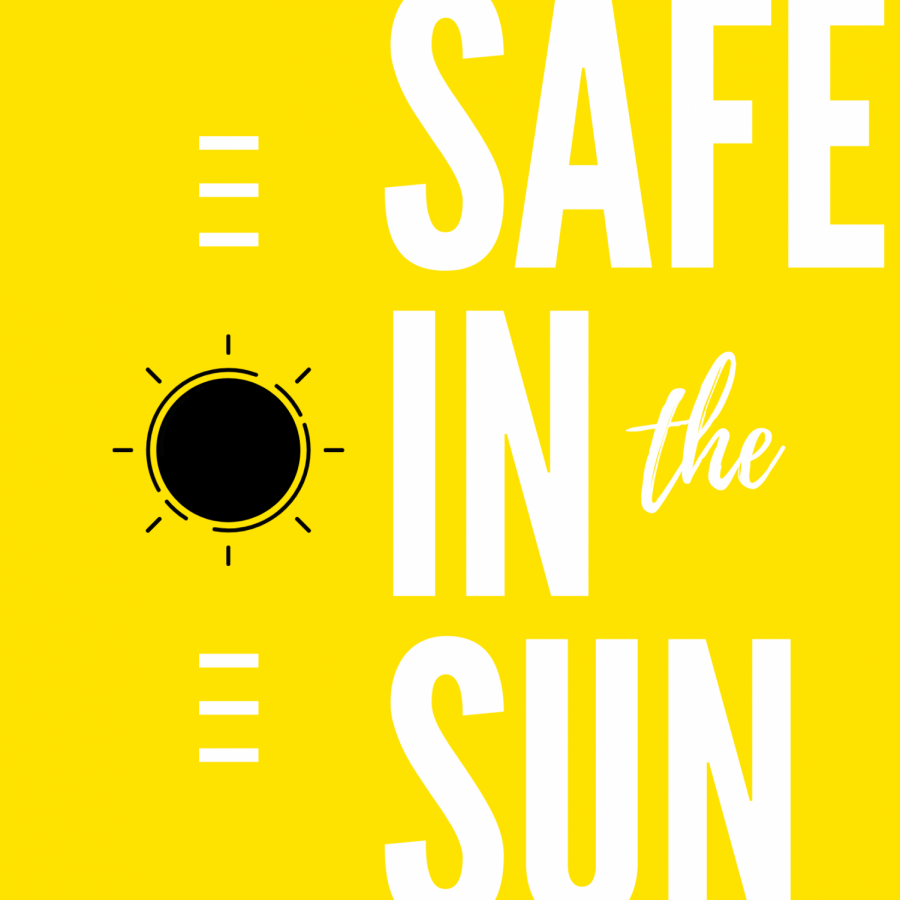Is there such a thing as too much sun?
Part II of the beauty is pain series
According to skincancer.org, at least one in five Americans will develop skin cancer by the age of 70.
February 26, 2020
I’m sure we all can remember the days in which we fought our parents about the application of sunscreen. I mean, who wants to waste their time in the summer sun applying sunscreen? More recently, for me at least, it has been the battle of having that sunkissed look for school dances. If we are being honest, it’s not like we can layout in sub-zero weather. I am forced to turn to my other options: tanning beds. The real question is, real sun or not, how much can our skin handle and what are the long term risks?
I reached out to Dr. Sarah Sarbacker of Dakota Dermatology to help answer some of my questions. Sarbacker is a graduate of the University of North Dakota Medical School and has been practicing Dermatology for 23 years.
- What are the long term effects of too much contact with the sun?
“Long term effects can include anything from dark brown spots, broken blood vessels, thinning of the skin and various kinds of skin cancer,” said Sarbacker. “There is a direct correlation between these effects and exposure to the sun.”
Sarbacker pointed out that the sun emits ultraviolet radiation which is the cause of cancers and other sun-related skin disorders. Even though the effects of the sun may not show up right away, they can become more apparent as we age because radiation damage happens over a lifetime of sun exposure.
- How can one understand the common effects of the sun on their type of skin?
“Dermatologists categorize skin into six types,” said Sarbacker. “Type one is the very fair-skinned people that always burn, freckle and never tan. Type six is very black skin.”
Sarbacker states that the whiter your skin is, the more likely you will develop skin cancer. People of color, however, are protected and thus age nicer.
“There was a study done using only Caucasians,” said Sarbacker. “They were split into four groups according to how light or dark their skin was. The lightest of the Caucasians had four times the number of skin cancers than the others.”
Understanding your skin type can be crucial. Below you can identify your skin type based on color and common effects of the sun on your skin.
“ If you are a ginger with white skin you will never tan, end of story,” said Sarbacker. “Gingers need to protect their skin with clothing and sunscreen or pay the price of having skin cancers removed as they age.”
Type I: always burns, never tans (palest with freckles)
Type II: usually burns, tans minimally
Type III: sometimes mild burn, tans uniformly
Type IV: burns minimally, always tans well (moderate brown)
Type V: very rarely burns, tans very easily (dark brown)
Type VI: never burns (deeply pigmented dark brown to darkest brown)
- How do tanning beds affect your skin compared to contact with the sun?
“The results of tanning beds are much similar to that of direct contact with the sun,” said Sarbacker. “Melanoma and other skin cancers are increasing rapidly, and many of us feel that it is due to careless sun exposure and extensive tanning bed use.”
Teenagers need to be careful. Sarbacker informs that both burning and tanning are the skin’s response to radiation damage. This sounds and is scary.
- How much time in the sun is too much?
According to the European Code Against Cancer from the International Agency for Research on Cancer, the amount of time you spend in the sun is different for each person based on their skin type, the strength of the sun at that time and your location based on the ultraviolet index (UVI). Damage can be most intense during the warmest times of the day which usually falls between 11 a.m. and 3 p.m.
“At a UVI of six, which is easily reached at noon in spring and summer, a person with skin type one or two will suffer from a sunburn in 10-15 minutes,” said the European Code Against Cancer.
When out in the sun, protection is a must – be it sunscreen or protective clothing. Sunscreen, not tanning oil, is one of the most common forms of sun protection. The skin cancer foundation has a very helpful system for the application of sunscreen, they call it “The Five W’s (& H) of Sunscreen.”
Know the 5 W’s (& H) of Sunscreen
WHO: Everyone under the sun
WHAT: Broad spectrum SPF 15 or higher; SPF 30 or higher for a day outdoors
WHEN: Every day; 30 minutes prior to going outdoors. Reapply every two hours
WHERE: All exposed skin
HOW: One ounce (shot glass full) to entire body for each application
WHY: Reduce your risk of skin damage and skin cancer
- What are some healthy alternatives to tanning that will still leave your skin glowing?
“There is beauty in every color of skin,” said Sarbacker. “People need to be comfortable with the color of skin they were given because there is no way to alter this.”
If you are needing some quick color for an event or a trip, Sarbacker states that at this point she believes spray tanning to be okay. She did note that it is not clear if spray tanning on a regular basis, week in and week out, can cause long term consequences.
Tanning and contact with the sun, much like many other things, is good in moderation. We need the sun to assist our body in making vitamin D. This vitamin helps our body absorb calcium which is necessary for bone health and strength. However, we know that too much sun is damaging to our skin.
“We all like to get a little tan in the summer, but remember it is radiation damage,” said Sarbacker. “Unfortunately there are no magic creams to make skin look better. There are all kinds of different ‘potions’ but most never have any benefit that can be proven.”
Perhaps my mom was right to interrupt my time in the sun. I don’t want to worry about skin cancer when I’m in my forties. I need to protect my skin, and so do you.









